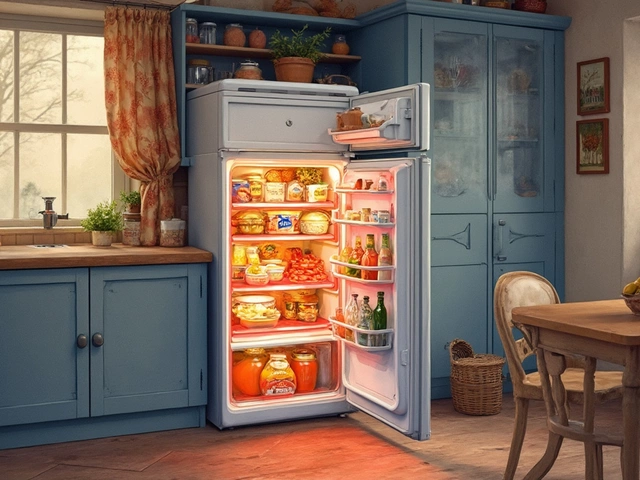If your electric stove isn’t heating right, you’re not alone. Most homeowners face a flat burner, flickering controls, or a stove that just won’t turn on at some point. The good news? Many of these hiccups are easy to spot and fix without tearing your kitchen apart.
First, check the power. A tripped breaker or a loose plug can make a whole range look dead. Once the electricity’s confirmed, look at the burners. A burnt‑out heating element is the usual culprit for a cold spot. You’ll see a broken coil or a darkened spot on the element. If the element looks fine, the issue might be the burner head – debris or a warped ceramic can block heat transfer.
Next, the control knobs. Over‑time, the contacts inside can wear out, causing intermittent heat or no heat at all. Turn the knob and feel for a gritty or loose feel – that’s a sign the switch needs cleaning or replacement. Another sneaky problem is the thermostat or temperature sensor. If the oven runs too hot or never reaches temperature, the sensor could be faulty.
Most element swaps are DIY‑friendly. Turn off the stove, unplug it, and remove the screws holding the element in place. Pull it out, snap the new coil into the connector, and screw it back. For stubborn burner heads, soak them in warm, soapy water for 15 minutes, then scrub gently with a non‑abrasive pad.
If you’ve inspected the wiring and everything looks solid, but the stove still won’t heat, it’s time to check the internal fuse or thermal cut‑out. These safety devices can blow if the stove overheats, and replacing them usually requires a screwdriver and a new part from a hardware store.
When in doubt, especially with control boards or gas‑electric hybrid models, call a qualified technician. Electrical components can be dangerous if mishandled, and a professional can quickly diagnose a hidden fault.
Our blog has deeper dives on each of these topics. Want step‑by‑step instructions on swapping a broken element on an electric hob? Check out "How to Replace a Broken Element on an Electric Hob: Step‑by‑Step Guide for DIY Repair." Need to troubleshoot an electric oven that won’t heat? Read "Electric Oven Not Heating? Common Problems, Fixes, and Maintenance Tips." For a broader look at stove issues, see "Electric Stove Problems: Common Issues and Troubleshooting Tips."
Whether you’re fixing a single burner or the whole range, the key is safety first: always disconnect power, work in a well‑ventilated area, and don’t force broken parts. With a bit of patience, many electric stove woes can be solved at home, saving you time and a costly service call.

Fixing an electric stove might seem daunting, but many common issues are surprisingly manageable with a bit of know-how. From understanding why the burners aren't heating to recognizing if a problem needs professional attention, this article sheds light on various aspects of electric stove repair. Whether you're dealing with strange noises, faulty wiring, or a completely inoperative oven, we explore what’s usually repairable and what might require a replacement. With practical tips, learn to troubleshoot and potentially save on costly service calls.

Electric stoves are a staple in many kitchens, but how long can you expect them to last? This article delves into the average lifespan of an electric stove and what factors can influence its longevity. Discover maintenance tips that can help extend its life and recognize signs when repairs or replacements might be necessary. This guide aims to empower you with insights into prolonging the efficiency of your kitchen's electric stove.

Understanding what usually fails in a fridge can save you time and money. This article explores common issues like malfunctioning thermostats, compressor problems, and leaky seals. Learn helpful tips for diagnosing and possibly fixing these issues yourself. Knowing when to call a professional is also crucial in the life of your fridge.

When it comes to kitchen convenience, dishwashers are hard to beat. They free up our time, reduce water and energy use, and help keep our kitchenware sparkling clean. But how long should one really expect a dishwasher to last? This article will explore average lifespans, key factors affecting longevity, and practical tips for extending the life of your trusty machine, ensuring you get the most value and efficiency.

Curious if you can fix your dishwasher without calling a pro? This article breaks down the most common dishwasher problems and explains which repairs you can actually do yourself. We’ll cover how complicated these appliances really are, how to figure out what’s wrong, the tools you’ll need, and which jobs might leave you better off calling an expert. Get practical tips, interesting facts, and a clear picture of what you’re actually signing up for before grabbing that toolbox.

Looking for a reliable refrigerator that won't leave you struggling with frequent repairs? Discover which fridge brands are known for their durability and efficiency. This article breaks down the brands with the least reported problems, providing valuable insights from customer reviews and expert opinions. Learn practical tips on how to choose a fridge that suits your needs and keeps your kitchen running smoothly.

Replacing the anode rod in a water heater can extend its lifespan and prevent costly repairs. This article breaks down the cost of replacement, including materials and labor, and discusses why it's a crucial part of water heater maintenance. Discover how often anode rods should be checked and what signs indicate it's time for a replacement. Whether you DIY or hire a pro, understanding these factors can save you money and stress.